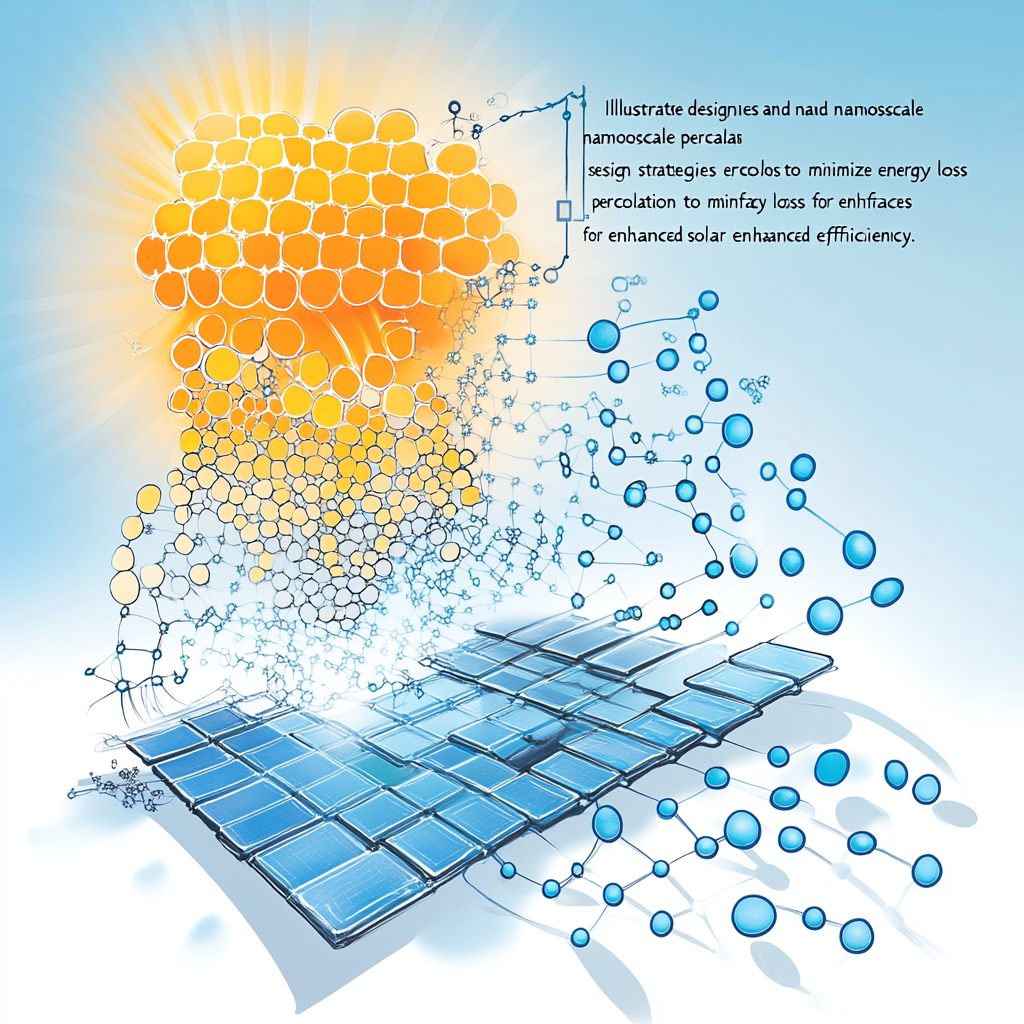
“Enhancing Organic Solar Cell Efficiency by Addressing Interface Energy Loss”
Alright, let’s dive into the world of organic solar cells (OSCs) and unravel the tangled web of energy loss at their interfaces. If you think solar energy is all about sunshine and panels, let me assure you, there's a lot more sizzling beneath the surface. The hunt for efficiency in OSCs is on, and spoiler alert: interfaces are the unsung heroes in this captivating energy saga.
Organic solar cells, my dear friends, are more than just a fashionable alternative to silicon-based panels. They're a potential game-changer in the renewable energy arena—think cost-effective, flexible, and kind to our environment. However, lurking in the shadows are those pesky energy losses at the junction where donor and acceptor materials meet. This phenomenon can turn what was once sunny optimism into a gloomy reality. So, let’s unearth the secrets held at these interfaces and see how they could lead us to a brighter, more energizing future.
When we talk about OSCs, we cannot overlook the role played by interfaces. Imagine two dance partners—if there's a mismatch in their rhythm or energy, their performance suffers. That's exactly what happens at the donor/acceptor interface. These energy offsets can significantly influence how well the cell performs. Research has shown that if you can tame that highest occupied molecular orbital (HOMO) offset between the donor and acceptor, it’s like finding that perfect beat in a catchy song. The open-circuit voltage ((V_{OC})) can leap from a modest 0.95 V to a tantalizing 1.05 V. That improvement isn’t just a number on a datasheet; it reflects a radiant change in performance.
But let’s not stop there. Picture a thoroughbred racehorse galloping with finesse. This is akin to what Professor Philip C.Y. Chow and his researchers achieved with their study on all-polymer solar cells. Using an innovative electron-accepting molecule called Y6, they orchestrated a delicate dance of molecular aggregation. The result? A robust nanoscale percolation network at the heterojunction interface that enhances not only charge generation efficiency but also stability. Seriously, talk about a power couple! This stability means less mystery in the aging and performance of solar cells, ensuring they shine brighter, longer.
Now, if we want to harness the full potential of OSCs, it’s clear we must adopt every strategy in our proverbial toolbox to minimize energy loss. One avenue researchers are eagerly exploring is molecular design and modification. Imagine tweaking the very building blocks of your solar panel like an artist refining their masterpiece. By sprucing up the end groups of nonfullerene acceptors—by making them either more electron-withdrawing or adding solubilizing groups—they’ve managed to turn mediocre performers into dazzling stars, elevating both (V_{OC}) and short-circuit current density. It's a bit like a well-placed accessory transforming an outfit from drab to fab!
While we’re on the topic of fashion, let’s talk about self-assembly. Asymmetric configuration sounds complex, but it’s akin to perfectly aligning your accessories to complement your outfit. Researchers are diving deep into the technique of crafting materials that fit together like puzzle pieces. This symmetric allure has led to fantastic achievements, with efficiencies teetering close to 18%. Yes, you read that right—the magic of design can yield fantastic results.
But here’s where it gets a tad more intricate. Not all is sunshine and rainbows in the world of energy offsets—measuring these offsets in real-time operating devices is still a hurdle we leap over. However, recent studies propose a clever solution. The ratio of radiative efficiency (EQE EL) for blend devices to that for a component with a lower bandgap might just reveal the key secrets of energy offsets. When this ratio falls below 0.1, it indicates a promising environment for charge generation. Yet if the dark clouds of non-radiative voltage loss due to the energy offset appear—roughly around 60 mV—you know there’s room for improvement. This is the tightrope of optimization we must traverse.
Adding another layer of complexity, researchers have estimated an upper thermodynamic efficiency limit for single-junction OSCs straddling around 31%, right under the illustrious Shockley-Queisser limit. Not too far from the finish line, but still a reminder that while we have challenges ahead, optimizing those interfaces might just steer us toward glory.
At the end of our energizing journey through the world of OSCs—where efficiency meets design, science, and a sprinkle of artistry—it is clear that linking energy loss to interfaces is an essential stepping stone toward unlocking the full potential of these innovative solar cells. Understanding and enhancing those energy offsets, exploring nanoscale percolation, and embarking on molecular design adventures will ultimately pave the way for a future where sustainable solar energy isn’t just a dream but a brilliant reality.
So there you have it, a glimpse into the beating heart of organic solar cells. Let’s rally together and keep pushing the envelope of what’s possible in the quest for sustainable energy. The future is solar, and it shines particularly brightly when we understand the magic of interfaces!
Want to stay up-to-date with the latest news on neural networks and automation? Subscribe to our Telegram channel: @channel_neirotoken

